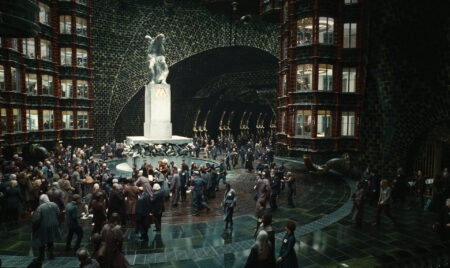It would not be an exaggeration to suggest that alcohol has been around ever since humanity can recall.
It is savoured in all parts of the world and is as versatile as you can think. Alcohol brewing is considered an art and has a rich history of birth and evolution. So allow this piece to take you on a journey across maps and calendars. Cheers!
Naturally occurring alcohol
In their earliest form, sugars in overripe fruits attract yeast and are fermented to produce alcohol.
Consumption of this spoiled fruit created a bug in the person and was considered a side effect of rotten food.
The beginning of alcohol as a beverage was in China in 7000 BCE, when people drank a fermented concoction of rice, millet, grape and honey as an aperitif.
Every country later had its unique type of alcohol shooting the climate and crops found there.
The Mesopotamians and the Egyptians made bread from cereal crops like Barley, wheat, and maize throughout the year.
Grapes were rare in these countries, so wine was expensive and reserved only for the Royals and elites.
In Rome and Greece, brewers found grapes in plenty, so wine was ordinary. In South America, people added certain hallucinogenic herbs to fermented grains, forming a potent drink called “Chicha”.
Mexicans preferred cactus sap, and their swig was called a “pulque”, in South Africa, banana and palm beer was a local favourite.
In the east, the Japanese made rice wine called Sake is popular even today. Nevertheless, these were very different and too low on actual ethanol content compared to alcoholic beverages today.
Distilled malts
The Revolutionary idea in the field of growing was of distillation. Alcoholic beverages had pure ethanol content of less than 15% as it was a natural fomentation process.
So at some point of time in the reaction, the byproducts kill the east itself, and the response stops, thus limiting alcohol percentage.
The earliest mention of distillation was in the 9th century Arabic writings. The legend goes that in Alexandria, Egypt, there lived an alchemist Maria the Jewish.
She invented the double boiler machine for the low boiling point of alcohol connected to a second container placed in ice-cold water through an airtight valve.
When alcohol was heated, it converted to vapours and, through the valve, condensed in the other container.
This invention brought more potent mixes to the table and proved to be a game-changer. The ethanol content could now be as much as 30%, and after further evaporation and wooden barrels, it could be 50%.
Alcohol,Exploration and religions
Distilled alcohol also benefited from being potable for a long time, making it a safe trade material—the English exchange brandy and Gin for slaves and land in Africa.
This realization can be considered a part of the Renaissance period of alcohol. After distillation came the world favourite of British Bourbon, Irish whiskey, Scottish scotch, French wine and cultural embrace of the multifaceted use of alcohol.
Early Jews and Christians integrated wine rituals into their worship. The Greeks used it as an over the counter medicine for diarrhoea, headache, lethargy and childbirth pain.
World cultures have similarities in having a god or goddess associated with alcohol, be it Roman Liber, Greek Dionysius, Japanese Inari, Egyptian Nephthy or the Indian goddess of wine, Varuni.
During the age of exploration, it played an essential role in preventing freshwater from rotting during expeditions. A bucket of brandy was added to every barrel of water as a method of preservation.
Downsides and expensive kinds
Playwright Thomas Nash was one of the first to discuss the pervasiveness of drunkenness in England.
In North America, more people are brewing beer in their houses and at low cost and consuming it to their heart’s delight.
In 1654 Massachusetts renewed its Reform laws against homebrewing, and it gained the attention of several countries. The taxation increased, making it costlier.
One might also wonder why single MI and Champagne is expensive; the reason lies in the detailed process and rarity.
Recently an auction house sold Macallan 1926, the 60-year-old whiskey, for $1512000, marking the most significant single sale ever for a bottle.
A large share of the alcohol evaporates; this share is called Angel’s share. The bigger this share is, the pricier the alcohol will be; with rum aged in the Caribbean, it can be a considerable portion in just ten years. In Scotland, the evaporation rate is slow, but in 30 years, it can be a lot.
As for Champagne, it is genuinely a bottle of Champagne only if it is made in Champagne, a town 150 km east of Paris.
The reason is different because of its weather and clay chalk soil giving the right acidity to the wine, which costs double the cost of other sparkling wines like Cava or Prosecco.
Like every other concept of the planet, alcohol consumption has both benefits and consequences, but the point of difference is that it is deep-rooted in culture.
So banning it or disgracing it is no solution but making people aware of the need for modulation.
Alcohol consumed in a controlled way lowers the risk of heart disease and diabetes and fights respiratory problems.
Red wine can help burn fat and boost memory. It has taken various forms and flavours; it is a standing testament to our evolution.
It is high time we celebrate our brews and view it not only as a party drink and a byproduct of culture.












